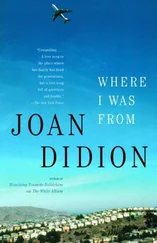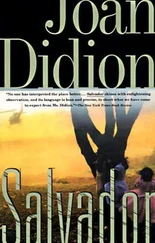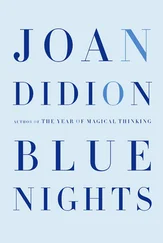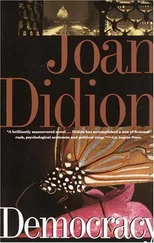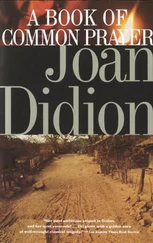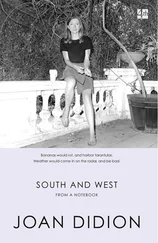13
I recall a conversation I had in 1970 with the manager of a motel in which I was staying near Pendleton, Oregon. I had been doing a piece for Life about the storage of VX and GB nerve gas at an Army arsenal in Umatilla County, and now I was done, and trying to check out of the motel. During the course of checking out I was asked this question by the manager, who was a Mormon: If you can’t believe you’re going to heaven in your own body and on a first-name basis with all the members of your family, then what’s the point of dying? At that time I believed that my basic affective controls were no longer intact, but now I present this to you as a more cogent question than it might at first appear, a kind of koan of the period.
14
Once I had a rib broken, and during the few months that it was painful to turn in bed or raise my arms in a swimming pool I had, for the first time, a sharp apprehension of what it would be like to be old. Later I forgot. At some point during the years I am talking about here, after a series of periodic visual disturbances, three electroencephalograms, two complete sets of skull and neck X-rays, one five-hour glucose tolerance test, two electromyelograms, a battery of chemical tests and consultations with two ophthalmologists, one internist and three neurologists, I was told that the disorder was not really in my eyes, but in my central nervous system. I might or might not experience symptoms of neural damage all my life. These symptoms, which might or might not appear, might or might not involve my eyes. They might or might not involve my arms or legs, they might or might not be disabling. Their effects might be lessened by cortisone injections, or they might not. It could not be predicted. The condition had a name, the kind of name usually associated with telethons, but the name meant nothing and the neurologist did not like to use it. The name was multiple sclerosis, but the name had no meaning. This was, the neurologist said, an exclusionary diagnosis, and meant nothing.
I had, at this time, a sharp apprehension not of what it was like to be old but of what it was like to open the door to the stranger and find that the stranger did indeed have the knife. In a few lines of dialogue in a neurologist’s office in Beverly Hills, the improbable had become the probable, the norm: things which happened only to other people could in fact happen to me. I could be struck by lightning, could dare to eat a peach and be poisoned by the cyanide in the stone. The startling fact was this: my body was offering a precise physiological equivalent to what had been going on in my mind. “Lead a simple life,” the neurologist advised. “Not that it makes any difference we know about.” In other words it was another story without a narrative.
Many people I know in Los Angeles believe that the Sixties ended abruptly on August 9, 1969, ended at the exact moment when word of the murders on Cielo Drive traveled Uke brushfire through the community, and in a sense this is true. The tension broke that day. The paranoia was fulfilled. In another sense the Sixties did not truly end for me until January of 1971, when I left the house on Franklin Avenue and moved to a house on the sea. This particular house on the sea had itself been very much a part of the Sixties, and for some months after we took possession I would come across souvenirs of that period in its history — a piece of Scientology literature beneath a drawer lining, a copy of Stranger in a Strange Land stuck deep on a closet shelf — but after a while we did some construction, and between the power saws and the sea wind the place got exorcised.
I have known, since then, very little about the movements of the people who seemed to me emblematic of those years. I know of course that Eldridge Cleaver went to Algeria and came home an entrepreneur. I know that Jim Morrison died in Paris. I know that Linda Kasabian fled in search of the pastoral to New Hampshire, where I once visited her; she also visited me in New York, and we took our children on the Staten Island Ferry to see the Statue of Liberty. I also know that in 1975 Paul Ferguson, while serving a life sentence for the murder of Ramon Novarro, won first prize in a PEN fiction contest and announced plans to “continue my writing.” Writing had helped him, he said, to “reflect on experience and see what it means.” Quite often I reflect on the big house in Hollywood, on “Midnight Confessions” and on Ramon Novarro and on the fact that Roman Polanski and I are godparents to the same child, but writing has not yet helped me to see what it means.
1968–1978
it is A curious and arrogantly secular monument, Grace Episcopal Cathedral in San Francisco, and it imposes its tone on everything around it. It stands directly upon the symbolic nexus of all old California money and power, Nob Hill. Its big rose window glows at night and dominates certain views from the Mark Hopkins and the Fairmont, as well as from Randolph and Catherine Hearst’s apartment on California Street. In a city dedicated to the illusion that all human endeavor tends mystically west, toward the Pacific, Grace Cathedral faces resolutely east, toward the Pacific Union Club. As a child I was advised by my grandmother that Grace was “unfinished,” and always would be, which was its point. In the years after World War I my mother had put pennies for Grace in her mite box but Grace would never be finished. In the years after World War II I would put pennies for Grace in my mite box but Grace would never be finished. In 1964 James Albert Pike, who had come home from St. John the Divine in New York and The Dean Pike Show on ABC to be Bishop of California, raised three million dollars, installed images of Albert Einstein, Thurgood Marshall and John Glenn in the clerestory windows, and, in the name of God (James Albert Pike had by then streamlined the Trinity, eliminating the Son and the Holy Ghost), pronounced Grace “finished.” This came to my attention as an odd and unsettling development, an extreme missing of the point — at least as I had understood the point in my childhood — and it engraved James Albert Pike on my consciousness more indelibly than any of his previous moves.
What was one to make of him. Five years after he finished Grace, James Albert Pike left the Episcopal Church altogether, detailing his pique in the pages of Look, and drove into the Jordanian desert in a white Ford Cortina rented from Avis. He went with his former student and bride of nine months, Diane. Later she would say that they wanted to experience the wilderness as Jesus had. They equipped themselves for this mission with an Avis map and two bottles of Coca-Cola. The young Mrs. Pike got out alive. Five days after James Albert Pike’s body was retrieved from a canyon near the Dead Sea a Solemn Requiem Mass was offered for him at the cathedral his own hubris had finished in San Francisco. Outside on the Grace steps the cameras watched the Black Panthers demonstrating to free Bobby Seale. Inside the Grace nave Diane Kennedy Pike and her two predecessors, Jane Alvies Pike and Esther Yanovsky Pike, watched the cameras and one another.
That was 1969. For some years afterward I could make nothing at all of this peculiar and strikingly “now” story, so vast and atavistic was my irritation with the kind of man my grandmother would have called “just a damn old fool,” the kind of man who would go into the desert with the sappy Diane and two bottles of Coca-Cola, but I see now that Diane and the Coca-Cola are precisely the details which lift the narrative into apologue. James Albert Pike has been on my mind quite a bit these past few weeks, ever since I read a biography of him by William Stringfellow and Anthony Towne, The Death and Life of Bishop Pike, an adoring but instructive volume from which there emerges the shadow of a great literary character, a literary character in the sense that Howard Hughes and Whittaker Chambers were literary characters, a character so ambiguous and driven and revealing of his time and place that his gravestone in the Protestant Cemetery in Jaffa might well have read only james pike, American.
Читать дальше

